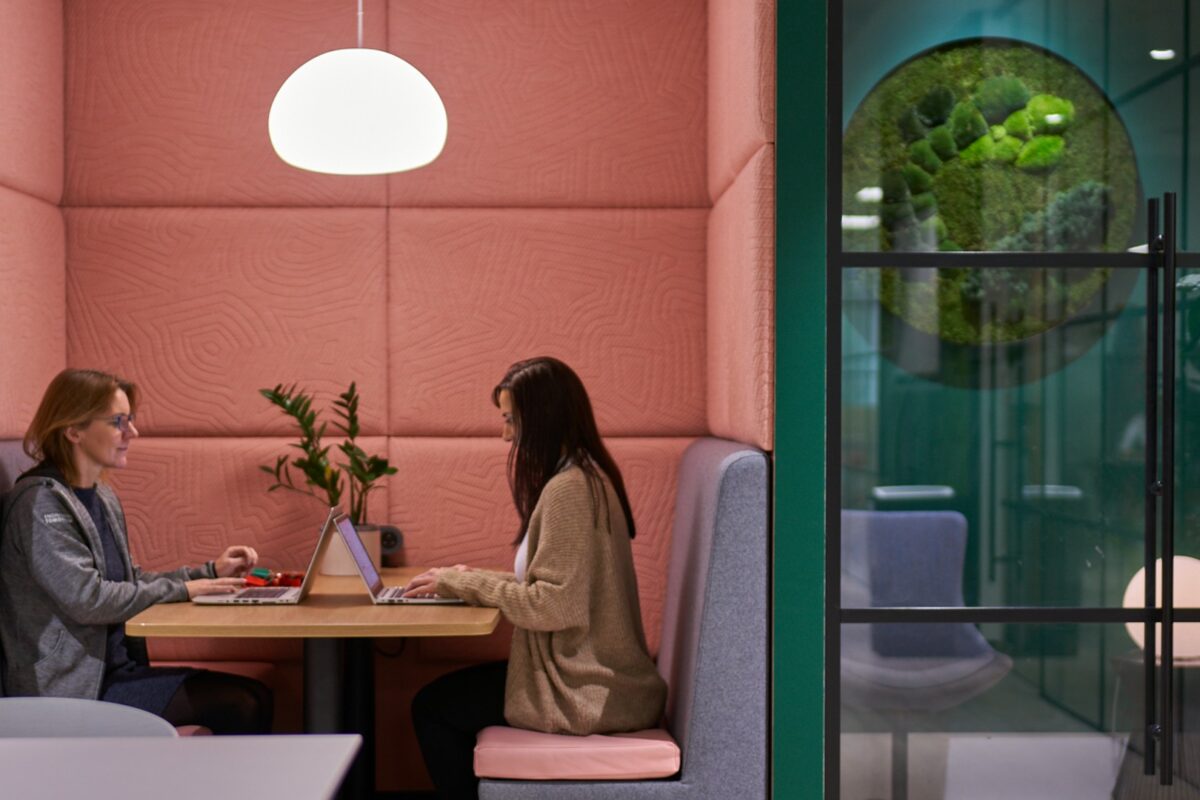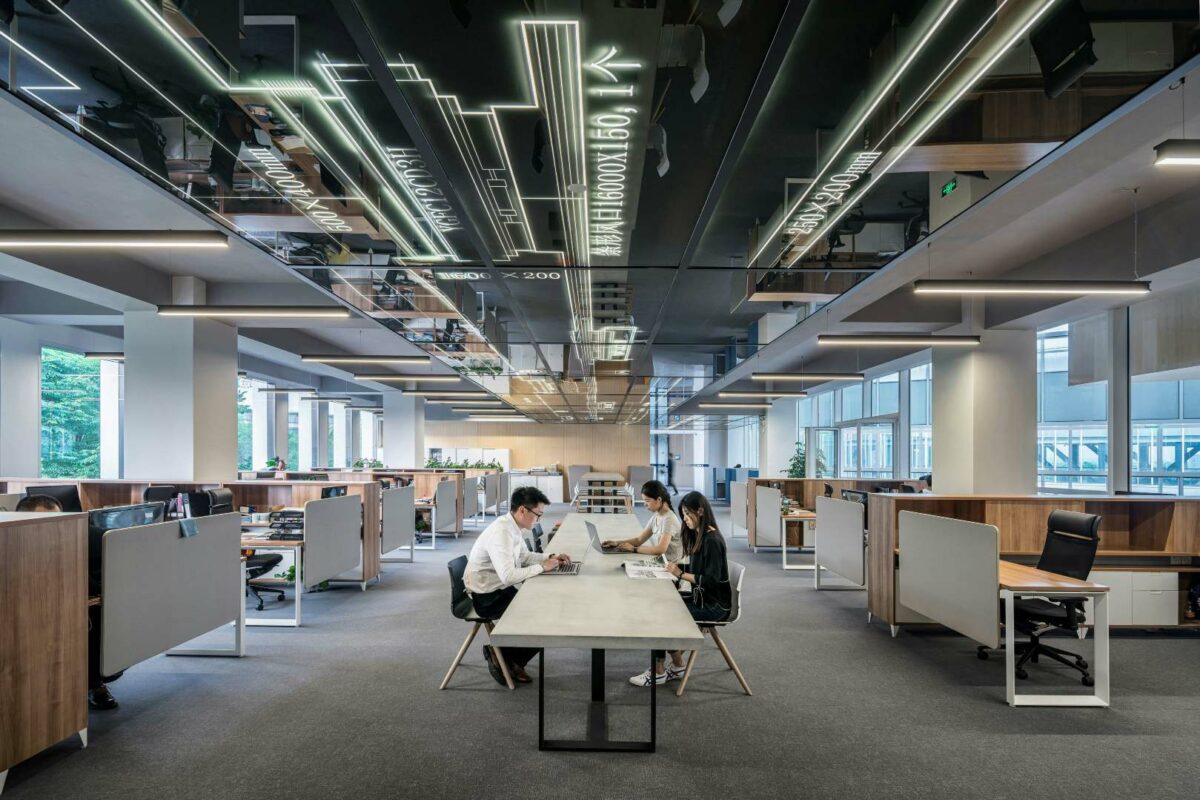‘Calm’ and ‘tranquil’ are two words that you’ll rarely — if ever — hear associated with airport travel. For both frequent and occasional flyers, navigating bustling airport environments is a necessary challenge that must be endured in order to reach the next destination — often noisy, chaotic and overwhelming, airports are typically as disconnected from nature as it is possible to be.
Fifteen years ago, work first began on the vision for an ambitious ‘Airport Terminal in a Garden’ for Bengaluru International Airport Limited (BIAL). The goal from day one was to place biodiversity and nature at the heart of a new kind of passenger experience — designed as a reflection of the city, the landscape approach would look to champion environmental and ecological stewardship while simultaneously celebrating Karnataka’s rich heritage and culture.
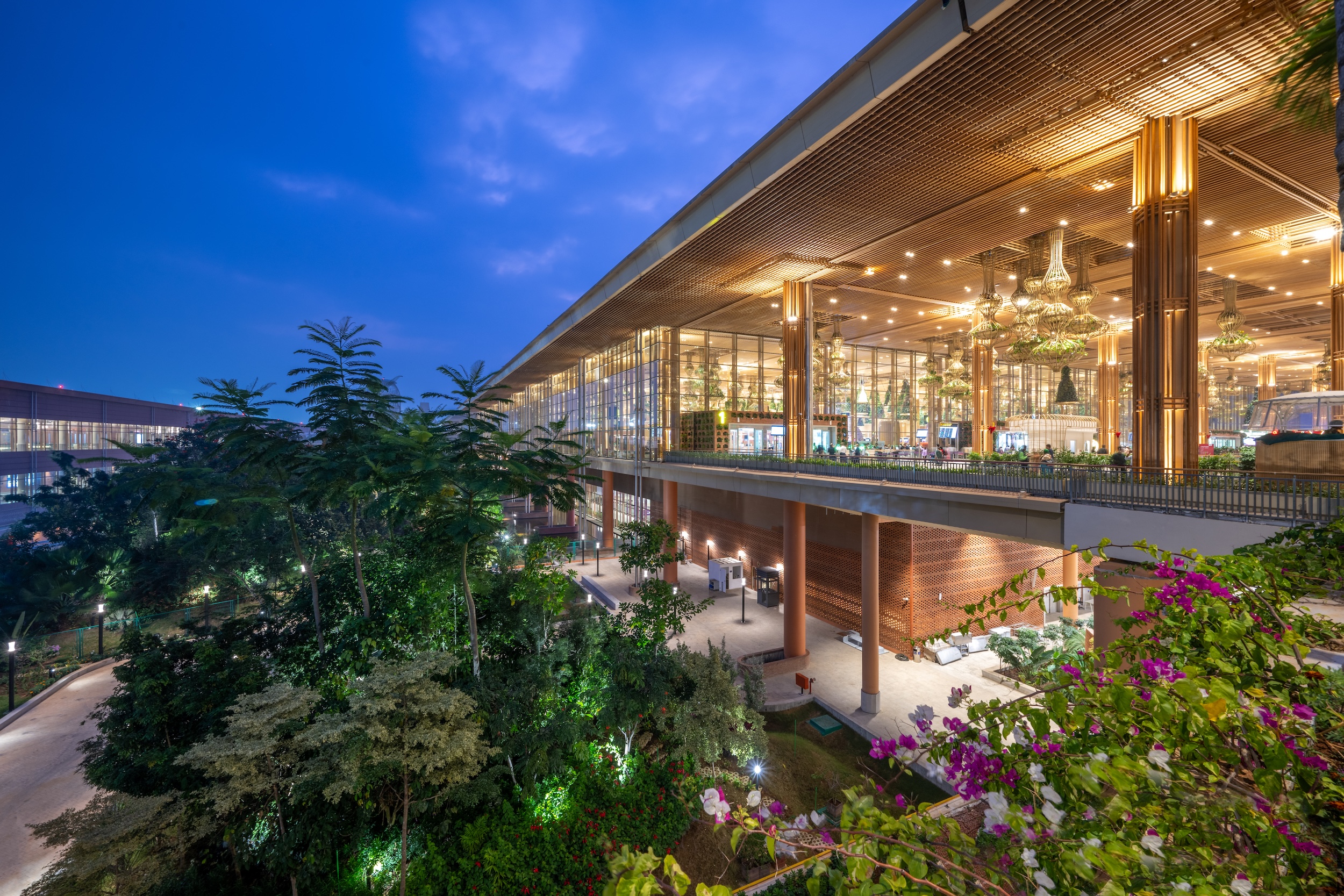
The clear intentions expressed during those early conversations — which took place at a time when the world was far less globally connected, before the explosion of the smartphone revolution — are clearly visible in Terminal 2 at Kempegowda International Airport in Benagluru, which recently welcomed its first international passengers.
Nature takes centre stage in this intentional reinvention of the Terminal experience. The strong biophilic design focus that is in abundance throughout the vast terminal creates a truly special environment that captures the spirit of the place, offers a unique garden journey — and points positively towards the passenger experience of the future.
A beautiful environment in its own right
With the landscape proposals developed around different zones to create specific garden experiences for passengers, a dynamic landscape and retail experience has now been delivered. The sense of being in a garden is heightened by the repeated, purposeful use of water throughout to create a strong landscape identity alongside the planting.
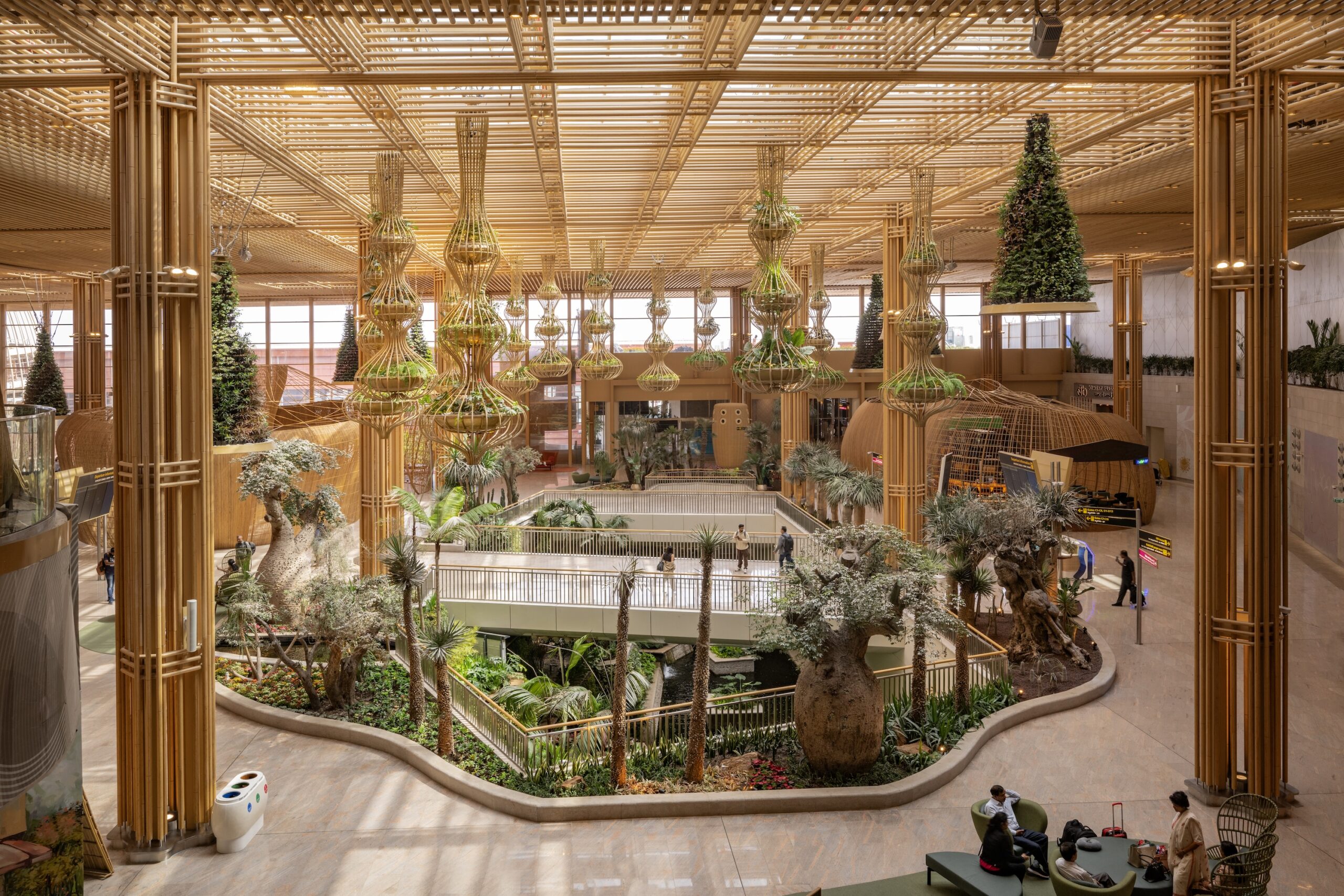
Biophilic design principles are central to the strong sense of identity and rich cultural links that Terminal 2 offers to passengers — and are crucial to transforming the traditionally stressful experience of navigating around a bustling airport setting into a calming setting, one filled with incredible species that have been sourced globally. The airport currently holds 3600 species, including almost 200 endangered species, providing a future framework for what can be achieved when nature sits at the forefront of architectural design planning from the outset, rather than biodiversity being treated as an afterthought.
A key element that currently sets Terminal 2 apart is its integrated sustainable water management system of rain water harvesting ponds and swales. This helps mitigate Bengaluru’s changing climate and burdening water demands as well as creates a resilient and biodiverse landscape.
Evoking connections with global nature
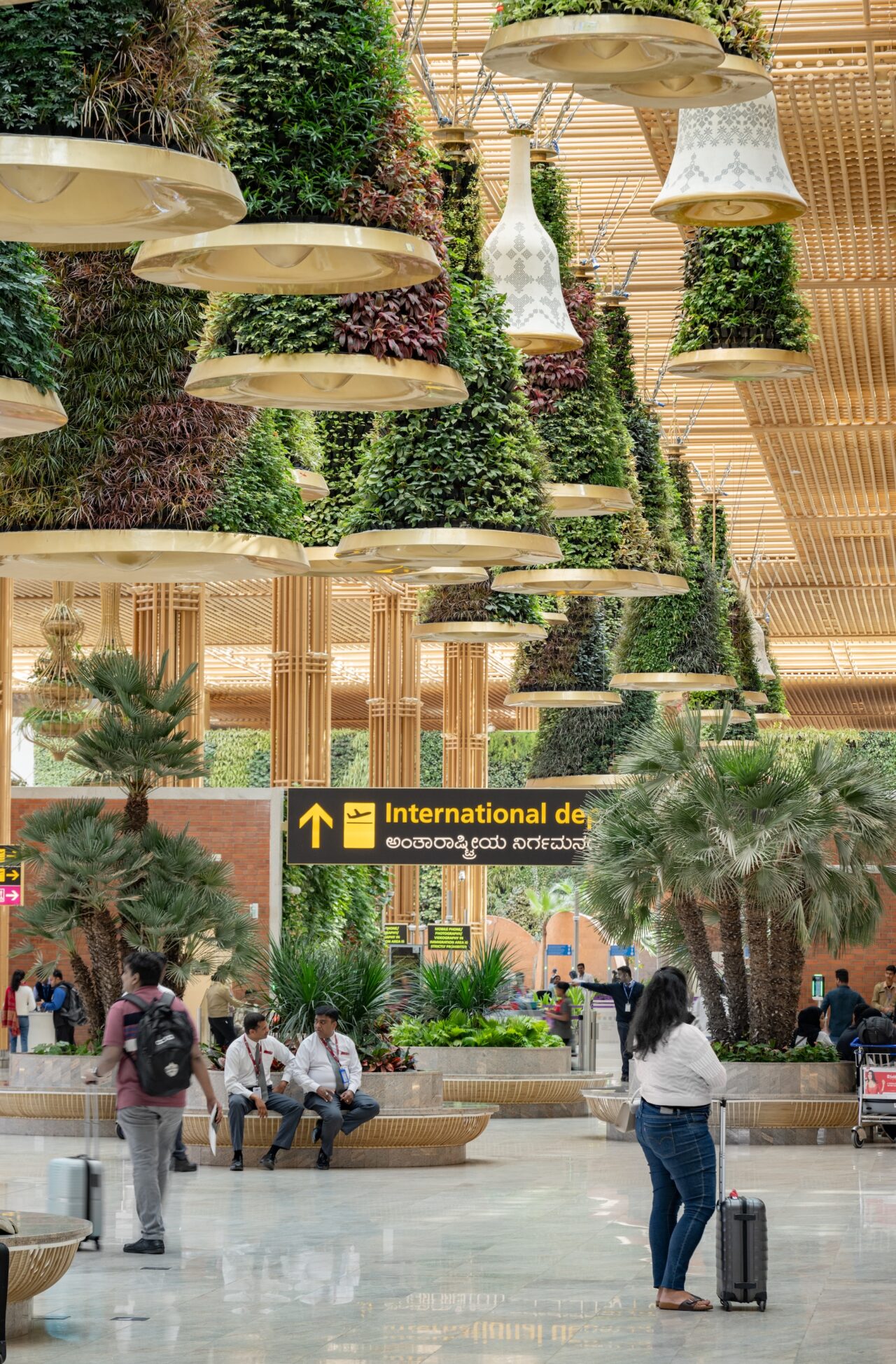
Exploring the terminal further, accessible outdoor gardens bring to life the atmosphere of forest and mountain, watercourses, and wildlife, and tended gardens of the Bengaluru landscape. By contrast, indoor gardens throughout the project evoke connections with global nature to create a unique sequence of garden experiences and hanging planters. Even throughout the airport’s retail space, passengers are connected to the gates through an extensive forest of native and endemic species.
As landscape architects, there was much to get to grips with during the development of an airport infrastructure project of this vast size — including complex functionality, efficiency and passenger requirements. In doing so, we were able to better understand how to integrate and optimise the landscape and garden experience in the most innovative and creative way whilst delivering on the airport’s many operational objectives.
Resilient to a changing climate
The external gardens and forest belt creates its own specific microclimate with temperatures two to three degrees lower than its surroundings. The gardens and forest cover assist in cleaning the air, while solar panels and daylight harvesting are estimated to help the terminal achieve around 25% energy savings. Over 7,700 existing trees and palms have been saved and re-used as part of Terminal 2, with the plants selected for use around Terminal 2 being predominantly native, responsive and resilient to a changing climate.
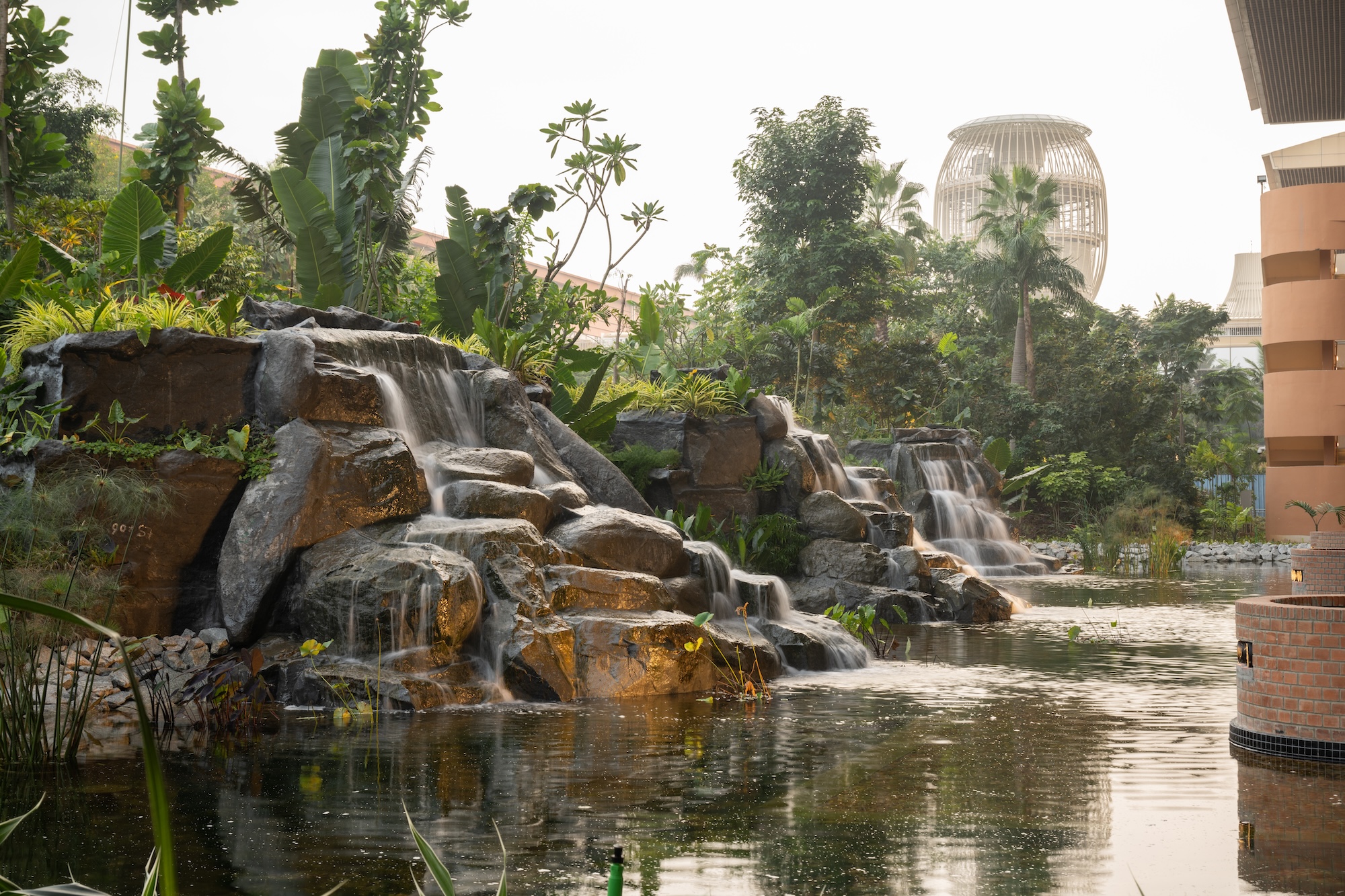
Terminal 2 at Kempegowda International Airport in Benagluru points towards what is possible in a world where the natural environment continues to be placed under ever greater strain. At a time when international passenger traffic is predicted to reach 4 billion in 2024 and global air passenger numbers forecast to double by 2042, the airports of the future have an essential role to play in combating the negative environmental impact of airport travel and actively supporting the biodiversity and climate crisis.
Andrew Haines is a Senior Associate at international landscape architecture practice Grant Associates, based in Bath, UK and Singapore. Grant Associates’ award-winning work — which includes Singapore’s world-renowned Gardens by the Bay — reconnects people with nature in insightful, delightful and distinctive ways whilst addressing the global challenges of urbanisation, the climate crisis and biodiversity extinction. grant-associates.uk.com/
Content Team
Work in Mind is a content platform designed to give a voice to thinkers, businesses, journalists and regulatory bodies in the field of healthy buildings.


